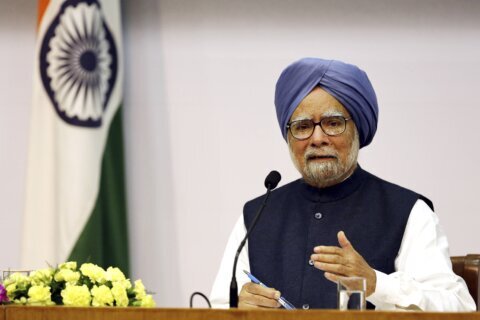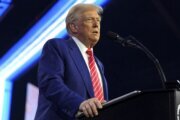These emerging-market ETFs are relatively insulated from China.
China is the world’s second-largest economy in terms of gross domestic product, and its rapid growth has it on track to take over the No. 1 spot from the U.S. as soon as 2028. That size and growth combination is exactly what attracted emerging-market investors to China in recent years. Unfortunately, rising geopolitical tensions between the U.S. and China and an internal crackdown on Big Tech companies by China’s own regulators have sent shares of Chinese stocks tumbling in 2021. Here are eight emerging-market ETFs that Bank of America recommends for investors concerned about China.
iShares MSCI Emerging Markets ex China ETF (ticker: EMXC)
The name of this ETF says it all. If you’re looking to invest in emerging-market economies other than China, the iShares MSCI Emerging Markets ex China ETF may be exactly the fund you’re looking for. The EMXC fund is Bank of America’s highest-rated emerging-market fund and is the only one the bank covers that has absolutely no exposure to China. Roughly 63% of the fund’s holdings have “buy” ratings from the Bank of America analyst team, while only 9% of stock holdings have “underperform” ratings. Top holdings include Taiwan Semiconductor Manufacturing Co. Ltd. (TSM), Samsung Electronics Co. Ltd. (SSNLF) and Reliance Industries Ltd.
Schwab Fundamental Emerging Markets Large Company Index ETF (FNDE)
The Schwab Fundamental Emerging Markets Large Company Index ETF is the only emerging-market fund on this list other than the EMXC fund that has significantly more exposure to Bank of America “favored” countries than “unfavored” countries, including China. About 64% of the fund’s 296 stock holdings have Bank of America “buy” ratings, while 13% have “underperform” ratings. The fund’s stock selections and weightings are based on sales, cash flow and capital returns, which helps protect investors from high-risk, low-quality stocks. Top holdings in the FNDE fund include Gazprom PAO (OGZPY), Taiwan Semiconductor Manufacturing Co. and Lukoil PAO.
iShares Core MSCI Emerging Markets ETF (IEMG)
The iShares Core MSCI Emerging Markets ETF is one of the largest and most popular emerging-market ETFs in the world. In fact, its daily trading volume is about $652 million, higher than any other stock on this list. About 60% of the fund’s holdings have Bank of America “buy” ratings, while just 7% have “underperform” ratings. The fund has 2,569 holdings, providing plenty of diversification for investors. Unfortunately, the IEMG fund isn’t completely insulated from China. Top stock holdings include Taiwan Semiconductor Manufacturing Co. and China’s Alibaba Group Holding Ltd. (BABA) and Tencent Holdings Ltd. (TCEHY).
SPDR Portfolio Emerging Markets ETF (SPEM)
The SPDR Portfolio Emerging Markets ETF has 2,542 emerging-market stock holdings weighted based on market capitalization. About 30% of the fund’s holdings come from favored countries, while 37% come from unfavored countries. Hong Kong and China account for a combined 40.5% of its holdings. Still, 57% of SPEM holdings have “buy” ratings, while only 7% have “underperform” ratings. The SPEM ETF also has the highest Sortino ratio (0.85) of any of the funds mentioned, suggesting it has a relatively favorable risk-reward balance for investors. Top SPEM stock holdings include Taiwan Semiconductor Manufacturing Co., Tencent and Alibaba.
Vanguard FTSE Emerging Markets ETF (VWO)
Vanguard has a reputation for low-cost funds, and the Vanguard FTSE Emerging Markets ETF is no exception. VWO has an expense ratio of just 0.1% — the lowest of any of the emerging-market ETFs mentioned. That low expense ratio means fees won’t eat into investor returns. The fund has about 38% exposure to unfavored countries, but 59% of its 4,286 holdings have Bank of America “buy” ratings compared to only 8% that have “underperform” ratings. Like many other emerging-market funds, VWO’s top three holdings are Taiwan Semiconductor Manufacturing Co., Tencent and Alibaba.
Schwab Emerging Markets Equity ETF (SCHE)
The Schwab Emerging Markets Equity ETF has been the worst-performing emerging-market fund on this list over the past year. The SCHE fund has gained just 12%, roughly half the return of the EMXC fund, the top-performing emerging-market fund on the list. About 64% of the fund’s holdings have Bank of America “buy” ratings, while just 8% have “underperform” ratings. The fund is well-diversified with a total of 1,593 holdings, and its 2.4% dividend is the highest among the eight funds mentioned. The SCHE fund’s top three stock holdings are Taiwan Semiconductor Manufacturing Co., Tencent and Alibaba.
FlexShares Morningstar Emerging Markets Factor Tilt ETF (TLTE)
The FlexShares Morningstar Emerging Markets Factor Tilt ETF takes a unique approach to emerging markets. The fund holds 2,459 stocks. While it holds many of the same stocks as other emerging-market ETFs, the TLTE fund overweights small-cap stocks and value stocks and underweights large-cap stocks and growth stocks. The TLTE fund has low daily trading volume and a relatively high 0.59% expense ratio. However, it has slightly more exposure to favored countries (26%) than unfavored countries (25%). Its top three stock holdings are Samsung Electronics, Taiwan Semiconductor Manufacturing Co. and Tencent.
Goldman Sachs ActiveBeta Emerging Markets Equity ETF (GEM)
The Goldman Sachs ActiveBeta Emerging Markets Equity ETF also takes a slightly more nuanced approach to emerging markets than simple market cap weighting. GEM has an equal weighting of four sub-indexes of stocks focused on value, momentum, quality and low volatility. The fund has a relatively high expense ratio of 0.45% and has about 33% exposure to unfavored countries. However, 62% of its 588 holdings have Bank of America “buy” ratings compared to only 10% that have “underperform” ratings. The GEM fund’s top three holdings are Taiwan Semiconductor Manufacturing Co., Tencent and Samsung Electronics.
Best emerging-market ETFs with limited China exposure”
— iShares MSCI Emerging Markets ex China ETF (EMXC)
— Schwab Fundamental Emerging Markets Large Company Index ETF (FNDE)
— iShares Core MSCI Emerging Markets ETF (IEMG)
— SPDR Portfolio Emerging Markets ETF (SPEM)
— Vanguard FTSE Emerging Markets ETF (VWO)
— Schwab Emerging Markets Equity ETF (SCHE)
— FlexShares Morningstar Emerging Markets Factor Tilt ETF (TLTE)
— Goldman Sachs ActiveBeta Emerging Markets Equity ETF (GEM)
More from U.S. News
5 of the Best Stocks to Buy for August
Investing in FAANG Stocks: Do They Deserve the Hype?
Why You Should Add Midcaps to Your Portfolio
8 Emerging-Market ETFs With Low China Exposure originally appeared on usnews.com







